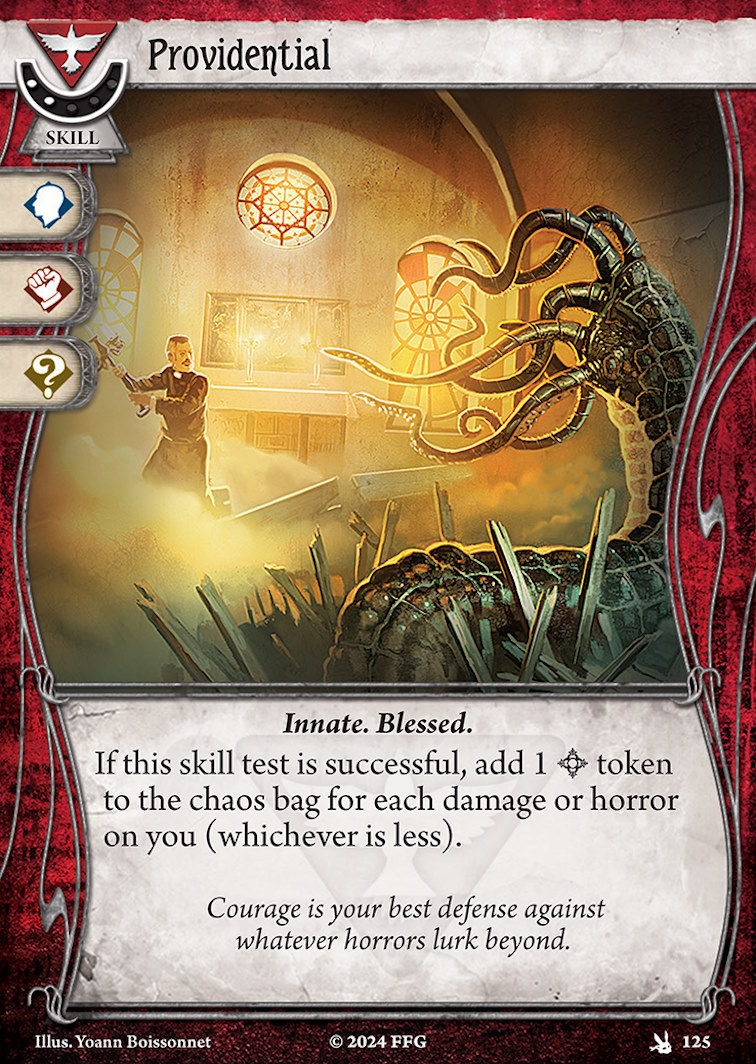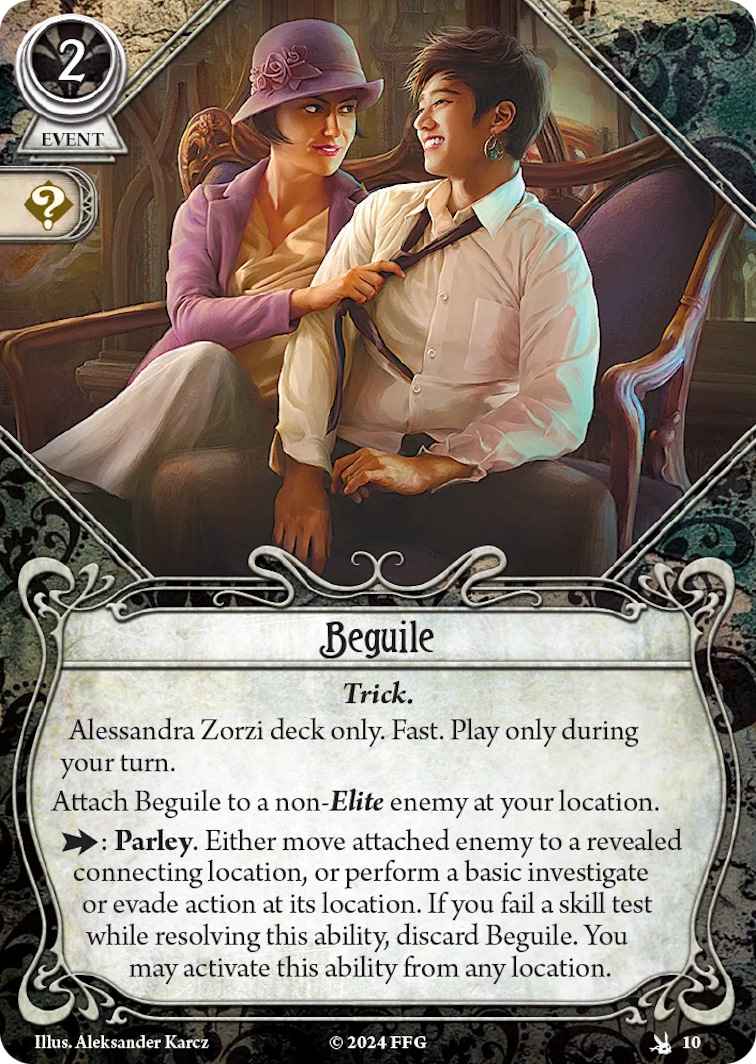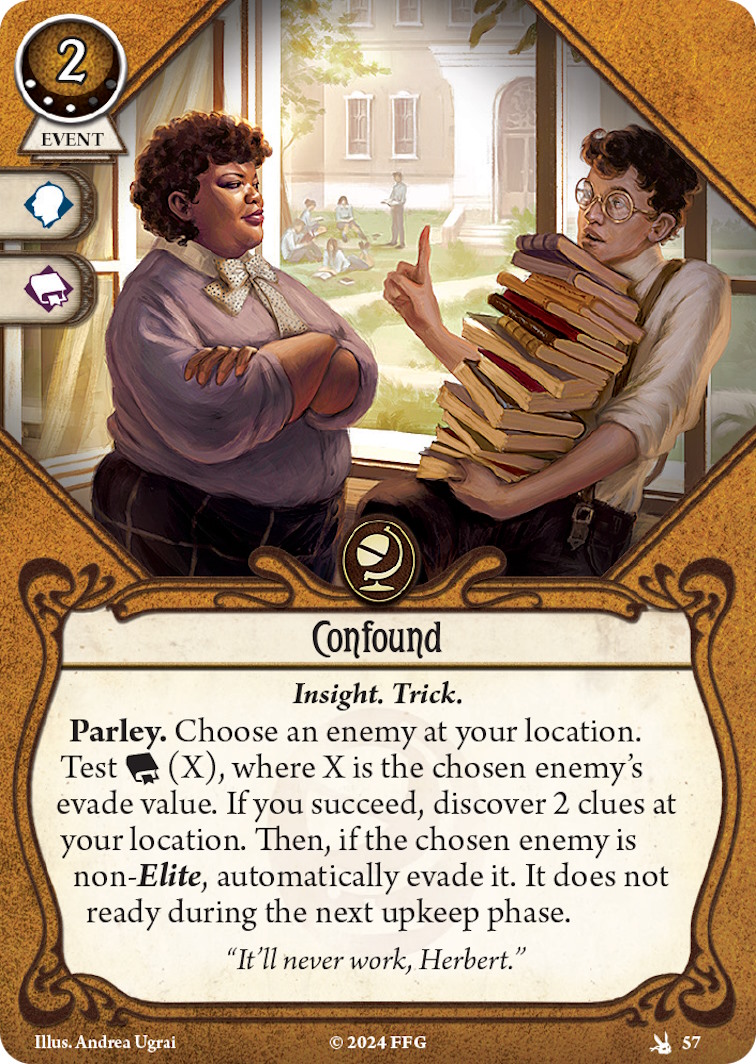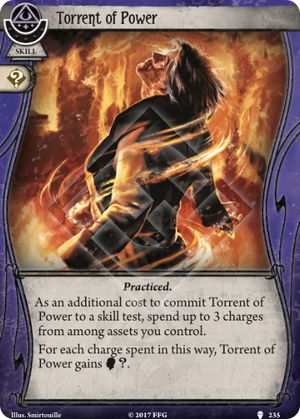
Literally unplayable
Providential might easily be one of the worst Skill cards in the game, and I'm not being hyperbolic in the slightest: I can see things like Leadership and Intrepid actually seeing more play than Providential, if only because they have no exp cost attached
About the only good thing I can remotely say about this Skill is that it has a decent commit for +2 will, +2 fight or +1 to everything else, but guess what? Dauntless Spirit on average will give you a bigger stat boost than Providential, with the only drawback of being limited to Willpower and Fight, and it is one exp cheaper
There is no way, anyone that isn't doing something with blessing would take this card for the commit alone...
Then what about the bless-related effect, is that good?
HAHAHAHAHA
Of course no, it sucks!
First off, you need to pass a test in order to actually trigger the effect, which is a bit of an oddball decision in the Survivor's card pool given they usally benefit from their cards indepedently if they fail or pass or ONLY if they fail. Given the very volatile nature of the Chaos Bag, that is a serious point against this stupid card as failing the test means you get nothing out of it. And unlike Scavenging this card does NOT have a strong enough effect to justify this clause
Second, you add 1 bless token for each damage or horror you have, now an effect that would have been somewhat decent is completely ruined by the fact you don't get to choose which type of harm scales with the token generation: you only can scale with the lesser amount of the two
This design choice is what makes this card useless
Because imagine you are playing Silas to gurantee triggering its effects with his special ability, and you have 8 damage on him and no horror (somehow, maybe you screwed the pooch with Dreams of the Deep), and you commit this card and pass a test.
Guess what?
You are generating zero blessing, because 0 is less than 8!
That also means, for characters that have very unbalanced spread of Health/Sanity this card gets worse as it can only truly scale most of the time with their weaker endurance pool, so at most Silas would be able to generate 4 blessings, that is literally the same of flipping Keep Faith!
This card can ONLY maybe work on character that have "balanced" endurance, so we are talking about Investigators like Wendy, Preston, Minh and Calvin and even then, they need to be literally on death's door and almost out of their mind to use this card to its full effect and maybe generate 6 bless tokens: it is stupidly designed!
The best user for this is without a doubt Calvin if he is doing a "Blessed Survivor" because he is encouraged to keep, his health and sanity low, but even the Calvin can instead use Signum Crucis to take advantage of the fact his base skills are all 0 to generate tokens equal to the test difficulty.
And mind you, Signum is not only on average a better burst bless generation than Providential, it is also currently the ONLY card with exp cost that is considered not good enough to justify having to spend exp for it in the first place, so it was buffed to cost 0 exp and let you include it in your deck as part of your level 0 pool at the start.
Providential is the proof FFG does not learn from their past mistakes, because something like this wouldn't have been printed as a level 2 card if they took just a minute to look back at the Survivor card pool.




